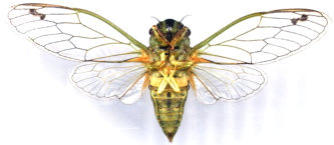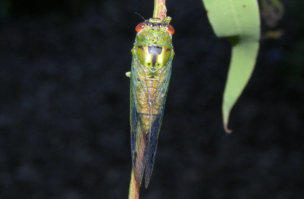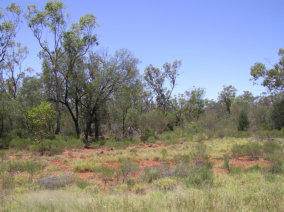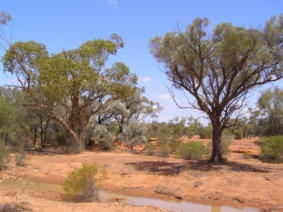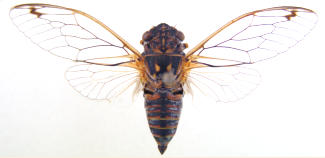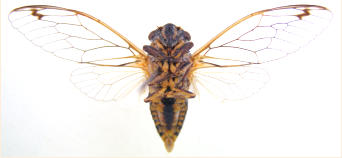
Small Acacia Cicada
Clinopsalta tigris (Ashton, 1914)
© Popple Creative Industries 2014–2025
Male
Previously referred to as
Cicadetta tigris.
Species number (TNS):
206.
Fore wing length:
21–24 mm.
Distribution and seasonality:
Throughout inland New South
Wales and inland south
Queensland, west into central
and northern South Australia
and the Northern Territory,
south-west into the Goldfields
region of Western Australia.
Adults occur from October to
February.
Notable localities:
Mount Hope, Wilcannia (Simon
lab), Pilepudla (P. Lang), Lake
Broadwater, Cravens Peak (A.
Ewart), Julia Creek, Tilmouth,
Wolf Creek (Simon lab), Lake
Douglas (Simon lab).
Habitat:
Acacia scrubland and shrubby
woodland.
Calling song and behaviour:
Short, sharp single ticks or
clicks emitted at a rate of 4–5
per second. This is followed by
a fast double-ticking sequence
that sounds like a soft rattle.
Bouts of wing-snapping are
also produced. Adults sit on the
branches and stems of trees
and shrubs.
Colour variation:
Specimens vary from dark
brown with lighter reddish-
brown or yellow-brown
markings through to green with
dark-brown and yellow
markings.
Similar species:
Yellow-spotted Brigalow
Cicada.



dr-pop.net database record
Currently known extent
Habitat


